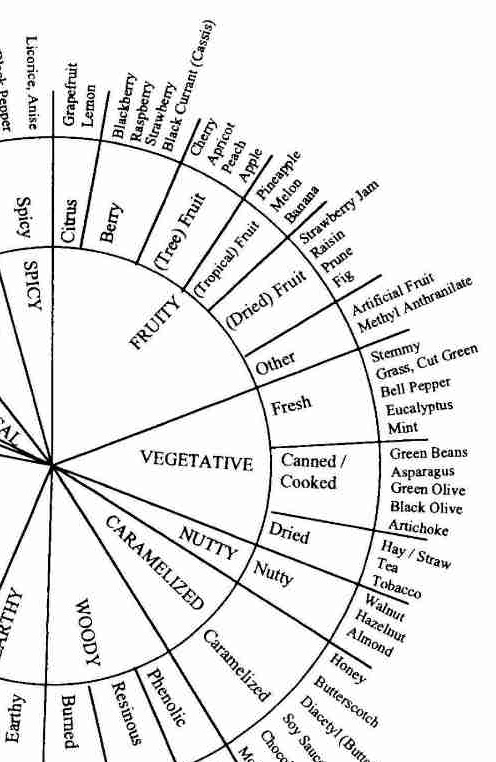
At a cheese and wine party recently, my companion commented on the delicate aroma of strawberries wafting from his glass of wine. Someone nearby guffawed at the non-existent joke, and made an infantile comment that wine should surely smell of grapes.
He should have received a poke with a pointed wooden stick for making such a fatuous remark, but at the time I didn’t have one with me. Wine never smells of grapes. Well, not often anyway. Even my dogs know that. And yes, they’re very well thank you, since you asked.
You may have come across wine reviews in newspapers and magazines which use expressions like, “an aroma with hints of blueberries”. This doesn’t mean that someone has chucked a bucket of blueberries into the wine as it was fermenting. Wine aromas are created perfectly naturally during the fermentation process and caused by so-called aroma compounds which include microscopic chemicals with slightly ominous names like pyrazines, terpenes, thiols and lactones. In combination, these compounds can produce a countless variety of different aromas.
Although we sometimes use the words “aroma” and “bouquet” interchangeably, wine professionals regard them as two quite separate things. Without getting too bogged down in technicalities, wine aroma (often known as the primary aroma) refers to the smells that come naturally from the aroma compounds in a particular grape. It’s usually the first aroma you pick up when you smell a wine and sometimes it comes through quiet dramatically. It’s nearly always fruit-like, herby or floral. For example, wines made from the Cabernet Sauvignon grape often carry aromas of peppercorns, black olives, black currants or raspberries. Other Cabernets show aromas of violets, tobacco or mint. Chardonnay typically brings aromas of tropical fruit, green apples or pineapples.
In contrast, wine bouquet (sometimes described as the secondary or tertiary aroma) is derived from the wine-making process which includes fermentation and ageing. These “background” smells are often quite subtle and elusive, and they may take several minutes to appear. A typical example of bouquet is the hint of vanilla on some wines caused by ageing in relatively new oak barrels. High quality wines sometimes have a complex bouquet that might contain hints of butterscotch, caramel or hazels nuts. Fine German Riesling brings a faint whiff of gasoline and Sauvignon Blanc can come with a hint of cat’s pee, which I admit doesn’t sound particularly appetizing. But needless to say, a good deal of practice is necessary to pick up these subtle smells and even more experience to put mental labels on them. As a visual aid to wine tasting, Dr Ann C. Noble developed the “aroma wheel” in 1984; an essential item for aspiring wine experts. You can order one from Amazon.
The aromas of wine are far more diverse than the flavours. Your tongue (or anyone else’s tongue for that matter) gives you information about mouth-feel and texture but it can detect only the five primary flavours of sourness, saltiness, sweetness, savoriness and bitterness. Your nose is capable of identifying countless aromas. A couple of years ago, researchers at Rockefeller University in New York City claimed that the human nose can detect up to one trillion different smells.
Wine writer Josh Dusick describes aroma as “the most intriguing and passion-inducing components of appreciating fine wine”. Yet despite this wonderful aromatic world in the glass, I am often amazed to see wine drinkers not bothering to smell the wine at all. It’s like forgetting to smell a rose. Honestly, I sometimes think I get more fun smelling a wine rather than actually drinking it. This is probably because in a previous life, I was almost certainly a dog.
The aroma of a wine can reveal something of its character and provenance but how do you go about smelling a wine? First, give it a good swirling around in the glass because the oxygen in the air helps to release the aromas. This is why wine glasses should be only be filled to about a third.
A dainty sniff from somewhere above the glass will tell you nothing. You need to poke your snout right into the glass (but not into the wine) and take several quick sniffs – like a blood-hound. Then do it again. Then again. The human nose can become fatigued after only about five or six seconds so take a break for a moment before you sniff again.
Ask yourself what flavours come to mind and try to identify some of them. And always use short sniffs rather than a single long one. Remember, I was once a dog, so I know about these things.




